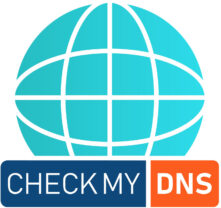The role of DNS in website downtime not only leads to frustration in the users’ experience but also can damage your business’s reputation and cut into revenue. What causes it is an enormous question; many factors and not so much thought about sometimes is the DNS. When a user attempts to request a web page, if one is unable to find such a request on the main address book called the “internet”, DNS directs the device to the appropriate servers within the network.
However, DNS-related issues can easily lead to significant downtimes if mishandled. This paper examines the role of DNS in website downtime and provides actionable strategies for preventing and resolving DNS-related outages.
What is DNS and Why It Matters
DNS, or the Domain Name System, translates human-friendly domain names, into the IP addresses that computers use to locate and connect to web servers. DNS will allow users to enter a URL into their browser and will direct them to the proper server hosting the website in question. Without DNS, the internet as we know it would be inaccessible for most people, who would have to remember numerical IP addresses instead of the friendly domain names they are used to.
The impact of DNS issues, then, is that this highly integral component of internet functionality can cause severe interruptions to website accessibility. This would mean that a breakdown in DNS infrastructure or misconfigured DNS could result in server not found errors and really long loading times; some websites may not come up at all, when, in fact, the web server itself is actually performing as it should.
Prevention and Solutions
Implementing proactive DNS management will ensure that the risk of experiencing downtime is reduced. There are several effective ways through which DNS-related outages can be prevented. They include:
- Use a Quality DNS Provider: A good DNS provider with redundancy and a good uptime history will help reduce the risk of your DNS server going down. You will find that most top-notch providers offer advanced management, security features as well as 24-hour support to keep your site alive.
- Configure DNS Failover and Redundancy: With DNS failover, if the primary server fails, then automatically, the backup server gets the traffic and reroutes the users. Thus, uptime for websites is maintained without having extended outages from server failure. DNS redundancy is as simple as using multiple DNS providers or geo-dispersed DNS servers that would further protect websites from being unavailable.
- Implement DNSSEC: DNS Security Extensions. DNSSEC adds an additional layer of security to the DNS protocol by authenticating DNS responses. This reduces the possibilities of DNS cache poisoning and man-in-the-middle attacks, which often result in website downtime or cause users to be redirected to malicious sites.
- Monitoring DNS Performance and Propagation: It helps in detecting early potential problems with DNS performance and propagation status. Many DNS providers offer monitoring tools that will alert you to anomalies in DNS performance or propagation delay.
- Optimizing DNS TTL Settings: The Time to Live (TTL) settings determine how long the DNS information is cached before it is refreshed. Lower TTL values may speed up DNS updates but increase the load on DNS servers. Careful management of TTL settings can balance timely updates with reduced server strain.
Solutions to DNS Downtime
Quick troubleshooting is required when DNS-related downtime is experienced. Follow these steps to resolve your DNS issue and access your website.
Verification of DNS records
DNS records need to be verified for configuration errors. Dns lookup tools, like nslookup or online dns checkers like checkmydns.org, can help verify whether the records point to the correct IP addresses and configurations. Errors are corrected as quickly as possible to restore function.
- Clear DNS Cache: Sometimes users may be facing access issues due to old or incorrect information in the DNS cache, even after the DNS data has been corrected. Have users clear their local DNS cache or implement a local caching policy to refresh this information as soon as possible.
- Switch to the Backup DNS Provider: When the main DNS provider is down, using the backup one helps access websites again. Some DNS services also provide a secondary DNS service with a replication of your DNS records for continued access should your primary DNS provider ever go down.
- Increase TTL Temporarily Before DNS Changes: Sometimes, just before updating your DNS values, you might want to increase the TTL settings temporarily before making DNS updates to allow for DNS data to remain cached longer without propagation delays so that maintenance window updates occur with minimal users impacted by reduced accessibility.
- Look For Professional Help: In cases where downtime persists, but internal troubleshooting cannot provide insight, seek the support from a DNS provider that can point out more complex DNS related issues. In DNS diagnostics the providers may have some resources that could help out such as configuration, propagation and security issues.
The most common cause of the role of DNS in website downtime is DNS issues; however, these are easy to avoid if the necessary understanding and management are executed. By implementing best practices such as using a good DNS provider, redundancy, monitoring of DNS performance, and DNSSEC configuration, the risk of downtime is avoided, and a smooth experience can be provided to users.
As DNS continues to play a critical role in website accessibility and security, the time spent understanding and managing it effectively will pay off in the form of higher uptime, increased user trust, and better online performance.
